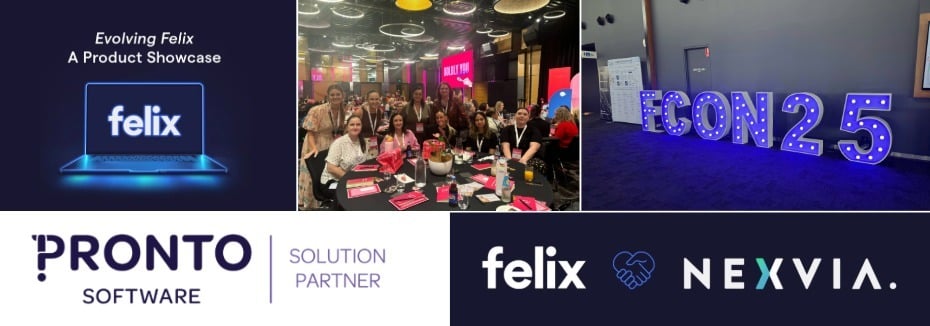Vendor onboarding is more than just getting a new supplier up to speed. It's the foundation for a successful, long-term relationship that fuels your supply chain efficiency and delivers value to your bottom line.
In this article, we'll explore strategies to overcome common challenges, leverage technology for efficiency, and continuously improve your approach.
Overcoming common vendor onboarding challenges
Vendor onboarding can present several challenges. These range from compliance issues to data security concerns.
Slow vendor response or vendor confusion
If you’ve sent out request to ask for information from suppliers and the responses are few and far between, it’s time to check your communication strategy.
Have you clearly communicated your expectations and requirements to the vendor, including:
- Company policies & procedures: Outline payment terms, invoicing procedures, intellectual property rights, and any other relevant policies
- Code of conduct: Ensure the vendor understands your ethical standards and compliance expectations
- Specific requirements: Clearly define requirements specific to doing business with your organisation, such as quality control processes or delivery schedules
As part of the onboarding process, it's important to provide training and support to new vendors. This can include information about your organisation's processes and systems, as well as any specific training related to the products or services they will be providing. Training ensures that vendors are fully prepared to meet your organisation's needs and can deliver the expected level of service and quality.
Internal confusion or overload
Imagine having multiple teams or projects hounding you for supplier requests as everything is needed yesterday. You still have a semi-procedure to follow, which is to onboard or prequalify those vendors. However, months or years of ad-hoc judging each case on the fly without documentation means heads will be scratched wondering:
- Which onboarding process to use for this vendor
- Where to store this vendor’s compliance documents
- How to communicate the status of vendors to other stakeholders including vendors themselves
As trite as it sounds, you need to segment the vendor onboarding process based on internally defined criteria, such as risk to your organisation or service category. From there, map the process out, include things like who needs to do what when each step takes place.
If you use the same prequalification process for a cleaning contractor and a demolition contractor, you’re bound to get slow vendor response (refer to the previous section).
Compliance and legal issues
Compliance and legal issues are a major concern in vendor onboarding. Non-compliance can lead to legal problems and damage your company's reputation.
To address this, establish a robust compliance check during the onboarding process. This should include verifying the vendor's licences and certifications.
Also, ensure your contracts clearly outline the vendor's obligations. This includes compliance with laws, regulations, and your company's policies.
Closing the door to payment fraud
Vendor bank details collected during onboarding – if left unverified – could open doors to cybercrime and fraud. Imagine unauthorised update of payment details, human data entry error.
Ideally, you’d want external verification from software such as Eftsure. And even more ideally, have that system integrated with whatever tool you are using to onboard vendors.
 Check out the Felix/Eftsure integration and how it reduces risk and admin overhead.
Check out the Felix/Eftsure integration and how it reduces risk and admin overhead.
Ensuring data security and privacy
Data security and privacy are crucial in vendor onboarding. You'll be handling sensitive vendor information, which must be protected.
Implement strict data security measures. This includes secure data storage and restricted access to vendor information. For optimal data security, consider using a platform or tool with ISO certification or a similar industry standard.
Also, ensure your vendors understand their role in maintaining data security. Include data security clauses in your contracts and provide training if necessary.
Managing the sheer volume of data
Managing the sheer volume of data involved in vendor onboarding can be a significant challenge. This includes vendor details, certificates, contracts, performance metrics, and other critical information.
Here are some strategies to effectively manage vendor onboarding data:
- Centralised data repository: Implement a central repository to store all vendor data electronically. This ensures easy access, reduces the risk of data loss, and simplifies information retrieval for future reference.
- Standardised data fields: Standardise data fields across all vendor onboarding forms and documents. This facilitates efficient data entry, analysis, and reporting.
- Data governance framework: Establish a data governance framework to ensure data accuracy, integrity, and security. This includes defining data ownership, access controls, and data retention policies.
Too many cooks spoil the vendor onboarding broth?
Vendor onboarding is a collaborative effort that involves multiple stakeholders. While the procurement or vendor management team is typically responsible for managing the onboarding process, other teams such as HSEQ, legal, sustainability, finance, and compliance may also be involved. Each department plays a role in ensuring that the vendor meets all necessary requirements and is a good match for the organisation.
However, that can lead to bottlenecks if the approval process is long winded. Here are some strategies to streamline stakeholder involvement and prevent bottlenecks:
- Clear roles & responsibilities: Clearly define the roles and responsibilities of each stakeholder involved in the onboarding process. This ensures everyone understands what is expected of them and eliminates confusion.
- Streamlined communication channels: Establish clear communication channels between all stakeholders. This could involve using a central platform for document sharing, task management, and real-time updates.
- Parallel approval processes: Whenever possible, consider implementing parallel approval processes for tasks that don't require sequential review. This can significantly reduce onboarding time without compromising thoroughness.
- Escalation procedures: Define clear escalation procedures for situations where there are disagreements or delays in the approval process. This ensures timely resolution of any roadblocks.

Leveraging technology for onboarding efficiency
In today's digital age, technology plays a crucial role in vendor onboarding. It helps streamline the process and improve efficiency.
Vendor onboarding software offers a range of features to streamline the process:
- Risk-based data collection & compliance checks: Route vendors to the right prequalification process depending on their service category. Reduce manual work and minimise errors by automating data entry and integrating compliance checks into the workflow.
- Centralised platform for vendor information: Establish a single source of truth for all vendor data, accessible to authorised personnel within your organisation.
- Enhanced communication & task management: Facilitate clear communication through the platform, ensuring timely completion of tasks. The software can also assign tasks and track progress, keeping everyone on the same page.
Check out how Felix’s Vendor Management module can help streamline the vendor onboarding/prequalification process.
Measuring onboarding success and continuous improvement
Measuring the success of your vendor onboarding process is crucial. It helps you understand if your process is effective and where improvements can be made.
Vendor performance metrics and feedback
Define key performance indicators (KPIs) that reflect the success of your onboarding process. These might include:
- Onboarding cycle time (time taken to onboard a new vendor)
- Cost per vendor onboarded
- Number of compliance issues identified during onboarding
- Vendor satisfaction with the onboarding experience
Periodic review and process optimisation
Regularly reviewing your vendor onboarding process is essential. This allows you to identify any issues and make necessary improvements.
Consider conducting a review every six months or annually. This can include gathering feedback from vendors and internal stakeholders, identifying areas for improvement, and making necessary changes to the process. The frequency can depend on the number of vendors you onboard and the complexity of your process.
Here are some areas to focus on during your review:
- Compliance checks: Are they thorough and up-to-date?
- Communication: Is it clear and timely?
- Vendor information collection: Is it efficient and secure?
- Vendor performance metrics: Are they relevant and accurately measured?
- Vendor feedback: Is it being collected and acted upon?
Maturity stages of vendor onboarding
As you embark on your benchmarking journey, it's helpful to understand the various maturity stages of vendor onboarding. Here's a breakdown of these stages:
- Initial stage: The onboarding process is reactive and lacks a defined structure. Steps may be inconsistent, leading to delays and errors.
- Developing stage: Basic procedures are established, but the process is still manual and prone to inefficiencies.
- Defined stage: A standardised onboarding process is implemented, ensuring consistency and reducing errors. Communication with vendors is improved.
- Managed stage: Onboarding is optimised through automation and technology. Performance metrics are tracked, and continuous improvement is a focus.
- Optimised stage: The onboarding process is highly efficient and collaborative. Vendor performance is consistently monitored, and there is a strong focus on building strategic partnerships.

By benchmarking your onboarding process and understanding the maturity stages, you can identify your current stage and develop a roadmap to reach the optimised stage.
Conclusion & vendor onboarding checklist
To help you implement the best practices discussed in this guide, we've created a vendor onboarding checklist. This checklist can serve as a starting point for your own process or as a tool to review your current process.
- Define clear objectives for the vendor onboarding process.
- Establish a standardised vendor onboarding procedure including mapping out stakeholders and approval routes.
- Implement vendor onboarding software to streamline the process.
- Communicate expectations and requirements clearly to new vendors.
- Provide training and resources to vendors as needed.
- Conduct thorough due diligence during the vendor selection phase.
- Set up and monitor vendor onboarding KPIs.
- Implement improvements to the process as needed.
Remember, this checklist is not exhaustive. Depending on your business needs and the nature of your vendors, you may need to add or modify steps. The key is to create a process that works for your organisation and your vendors.
---
Ready to streamline your vendor onboarding process and build stronger supplier relationships? See how Felix can help.

Recent Articles
2025 in review: Milestones, insights and achievements
2025 – a year of that brought meaningful developments for Felix as we continue to address the evolving needs of organisations navigating complex supply-chain environments.
Top 10 reasons for a centralised vendor database
As organisations grow, so does the complexity of managing vendor relationships. Many still rely on spreadsheets or siloed systems, which can lead to inefficiencies, data inconsistencies, and compliance risks. A centralised vendor database offers a smarter, more scalable solution that brings structure, visibility, and control to procurement operations.
Here are the top 10 reasons why centralising your vendor data is a strategic move.
Five ways poor contract storage could be costing your organisation money
Contracts are the backbone of every business relationship – legally binding documents that define expectations, responsibilities, and value.
But what if the way your organisation stores those contracts is quietly costing you money?
Let's stay in touch
Get the monthly dose of supply chain, procurement and technology insights with the Felix newsletter.







